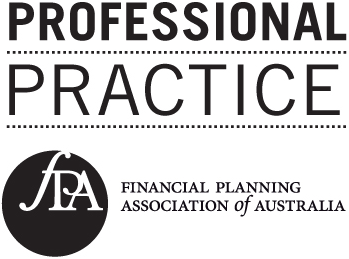Retiree self-protection: A volatility-and-downturn 'bucket'
The latest fall in share prices close to the 10-year anniversary of the global financial crisis (GFC) is likely to prompt more retirees and near-retirees to think about creating a volatility-and-downturn cash bucket.

This is a straightforward strategy intended to reduce the possibility of retirees – particularly those with many years of retirement ahead – having to sell investments at depressed prices to maintain their income in the event of an extended future downturn.
What is a volatility-and-downturn cash bucket?
Retirees and investors approaching retirement often set aside about two to three years of living expenses if possible in a volatility-and-downturn cash bucket. This provides a buffer against being forced to sell assets at the wrong time, which may cut the expected longevity of a portfolio and its ability to produce enough future growth.
In a recent commentary, actuaries Rice Warner emphasises how disciplined investor behaviour is critical to handling a sharp fall in share prices and how a cash bucket can assist them to remain disciplined.
There is typically a close link to market behaviour and investor behaviour. (Regular Smart Investing readers may have read our past discussions of these buckets.)
"The behaviour of stock markets is unpredictable as sentiment big part in short-term price movements," Rice Warner comments. "When people are upbeat about the economy, prices often rise exuberantly; when the market turns down significantly, it is usually fast and without notice.
"So, while we can say that investment markets," Rice Warner adds, "follow a cyclical pattern, no one can predict when the market will rise or fall. We also know that markets usually recover their losses over time, sometimes quite quickly."
And as the commentary says, the impact of a market downturn could be magnified for investors who "lock in losses by moving into more defensive strategies [such as switching to all-cash portfolios] at an inopportune time".
When and how can I create a cash bucket?
Investors often begin to build-up a cash bucket or buffer in their last few years before their planned retirement. For instance, some investors direct a proportion of their super contributions from their last few years in the workforce into a cash bucket within their super funds.
Other opportunities may arise to create a cash bucket including, say, an inheritance or the sale of an investment property. Some investors will simply increase the asset allocation to cash in their super funds – perhaps when periodically rebalancing their portfolios.
How big should I make my cash bucket?
While investors often set aside two to three years of living expenses in their volatility-and-downturn bucket, the size of the buffer and how it is built-up will depend on such personal circumstances as the size of an individual's retirement savings, age, investment timeframe and perhaps professional advice. When determining the size of your cash bucket, keep the age pension in mind if applicable.
How can I top-up my cash bucket?
Some investors direct a proportion of unspent income from their main diversified portfolio, such as a balanced or growth super fund, to top-up their cash bucket from time to time – particularly during stronger-performing years. And proceeds from regular rebalancing of an investor's main diversified portfolio can provide top-up money.
Written by Robin Bowerman
Head of Corporate Affairs at Vanguard.
16 October 2018
vanguardinvestments.com.au
Latest eNewsletters
Hot Issues
- AI exuberance: Economic upside, stock market downside
- Becoming a member of an SMSF is easy, but there are other things that need to be considered
- Investment and economic outlook, November 2025
- Move assets before death to avoid tax implications
- ATO issues warning about super schemes
- 12 financial tips for the festive season and year ahead
- Birth date impacts bring-forward NCCs
- Countries with the largest collection or eucalyptus trees
- How to budget using the envelope method
- Accountants united in support for changes
- Investment and economic outlook, October 2025
- Stress-test SMSF in preparation for Div 296
- Determining what is an in-house asset can help determine investment strategy
- Beware pushy sales tactics targeting your super
- Call for SMSF ‘nudge’ in DBFO package
- How Many Countries Divided From The Largest Empire throughout history
- How changes to deeming rates could affect your pension payments
- Five building blocks that could lead to a more confident retirement
- Investment and economic outlook, September 2025
- Caution needed if moving assets to children
- Evolution of ‘ageless workers’ sees retirement age rise
- Younger Australians expect more for their retirement
- New NALE guidance still has issues
- Airplane Fuel Consumption Per Minute


